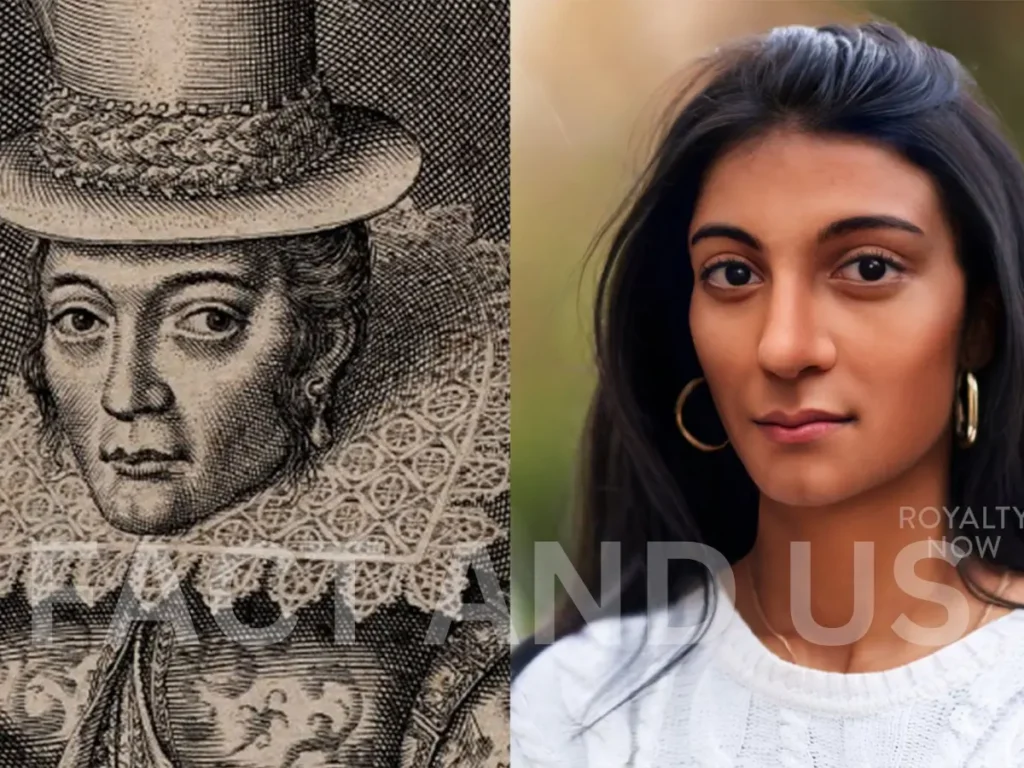One of the most famous women in early American history, Pocahontas is credited with helping struggling English settlers survive in Virginia in the early 1600s.
Contents
Pocahontas

One of the most famous women in early American history, Pocahontas is credited with helping struggling English settlers in Virginia in the early 1600s. Explorer John Smith – who claimed that Pocahontas saved his life – described her as “the means of saving this colony from death, famine, and utter confusion“.Born around 1596, Pocahontas was the daughter of Wahunsenakah (also known as Powhatan), a powerful chief of the Powhatan, a Native American group that lived in the Chesapeake Bay region.
Little is known about his mother. Her given name was Amonute (in private, Matoaka), but she is remembered by her nickname Pocahontas, meaning “playful one.”Pocahontas first saw the British when they landed at Jamestown, Virginia in May 1607. He secured his place in American history when Captain John Smith was captured by Powhatan’s brother, Opechancanough, that winter. In published accounts, Smith claimed that when he was about to be executed, Pocahontas came running and placed his head next to where he was about to be tossed over some rocks. Historians have debated Smith’s claims and many believe it was merely a tribal ritual, possibly a ritual of adoption because Powhatan thereafter referred to Smith as a member of the tribe.
Nevertheless, Pocahontas developed friendships with them and other settlers. She delivered messages from her father and accompanied Indian men delivering gifts of food to hungry colonists. However, the peace ended when the colonists demanded more food, and Powhatan – facing shortages and drought in 1608 and 1609 – refused. The colonists burned Indian villages and threatened violence, and from then on, Pocahontas stopped going to Jamestown.In 1610, Pocahontas married Kokoon, who was probably a member of the Patawa Mack, and they settled in the Potomac area. However, in 1613, he was taken captive when Captain Samuel Argyle invited him aboard his ship Treasurer. He was then taken to Jamestown. As ransom, the English settlers demanded the return of corn, prisoners and stolen goods, and a peace treaty. Some demands were met immediately; On others Powhatan agreed to negotiate. Pocahontas was moved from Jamestown to the Henrico settlement near present-day Richmond and, in July 1613, met John Rolfe.
After a year in captivity, Sir Thomas Dale took Pocahontas and 150 armed men to Powhatan, demanding the remaining ransom money. A skirmish ensued and the British burned the villages and killed the Indian men. During this event, Pocahontas tells her father that she wants to marry Rolfe. Powhatan agreed, and the marriage on April 5, 1614 was viewed by all as a peace-making event – ”the Peace of Pocahontas.” In 1614, Pocahontas converted to Christianity and was renamed Rebecca. Rolfe helped save the Virginia Colony by promoting tobacco cultivation, and his wife probably also helped him to some extent.Pocahontas gave birth to a son named Thomas, and in 1616 the Rolfes traveled to England, spending time in London and Norfolk, where the Rolfe family lived. While there, Pocahontas dressed in the Elizabethan style depicted in her famous portrait. Treated by the British as an Indian princess, she was allowed to meet with King James I and the royal family Was. Shortly after the Rolfes left to return to Virginia in 1617, Pocahontas became seriously ill with tuberculosis or pneumonia. She died shortly thereafter at the age of 22 and was buried in a churchyard in Gravesend, England.
Development Conception and writing

Following his directorial debut with The Rescuers Down Under (1990), Mike Gabriel happened upon an image of Pocahontas in a history book and decided that he wanted to pitch a film about her to Disney executives. Feeling that he was not adept at drawing women, he went to the pitch meeting with a Xeroxed image of Tiger Lily from Peter Pan (1953) which he added animals to. His one sentence pitch for the film was: “An Indian princess falls in love with an English settler, then is torn between her father’s wish to destroy the settlers and her need to help them.” When Disney executives asked Gabriel to summarize Pocahontas‘ character, he replied: “She’s a girl with a problem.” Inspired by William Shakespeare’s play Romeo and Juliet, the film’s directors Mike Gabriel and Eric Goldberg wanted the story of Pocahontas to feature two characters of very different backgrounds falling in love.
Story supervisor Tom Sito, who became the project’s unofficial historical consultant, did extensive research into the early colonial era and the story of John Smith and Pocahontas, and was confronted over the historical inaccuracies from historians.Already knowing that in reality Pocahontas married John Rolfe, Gabriel explained it was felt that “the story of Pocahontas and Rolfe was too complicated and violent for a youthful audience” so instead, they would focus on Pocahontas’s meeting with John Smith. While the real Pocahontas was eleven or twelve years old upon meeting John Smith, she is depicted as being around eighteen or nineteen years of age in the film, according to her supervising animator Glen Keane. Keane explained that this change was made because a film wherein a thirty year-old Smith falls in love with a child would be “sleazy”.Roy E. Disney felt that making the character older than the historical figure would make the film “more dramatic”.
Disney sought to consult Native American actors and a Native American organization in an attempt to accurately portray Indigenous culture onscreen. Elaine Dutka of the Los Angeles Times theorized that this decision was made due to the negative reception of Aladdin (1992) by the American-Arab Anti-Discrimination Committee; Disney denied Dutka’s theory. Native American activist Russell Means who plays Pocahontas’ father Powhatan in the film, suggested that Pocahontas say she was “honored” by a gift Powhatan gives in a scene of the film to reflect the ways that Native Americans talked; Disney changed the film’s script in accordance with Means’ suggestion. Michael Eisner pushed for Pocahontas to have a mother, lamenting that “We’re always getting fried for having no mothers.” The writers countered that Powhatan was polygamous and formed dynastic alliances among other neighboring tribes by impregnating a local woman and giving away the child, so it was believed that Pocahontas herself probably did not see her mother that much. Storyboard artist Joe Grant would conceive the idea of the swirling leaves to represent Pocahontas’s mother. Pocahontas became the first Native American Disney Princess and the first woman of color to be the lead character in a Disney film.As of 2014, she remains the only Disney Princess to be based on a historical figure.
Personality and design
Animator Glen Keane likened Pocahontas to a tribal version of Eve, here painted by Pantaleon Szyndler in 1889.
Keane also wanted Pocahontas to be written as a confident woman, unlike Ariel from The Little Mermaid (1989) or Belle from Beauty and the Beast (1991). The film’s producer, Jim Pentacost, viewed the character as “the strongest heroine we’ve ever had in a Disney film.” Disney spokesman Howard Green said that the studio desired for the film to portray its Native American characters in a “real” and “fair” way, in contrast to the “very comic, broad” and inaccurate portrayal of Native Americans in Peter Pan (1953). Green also said that the studio did not want the film to reinforce stereotypes about indigenous peoples of North America. The film’s crew met with Ray Adams, the chairman of the United Indians of Virginia, and showed him ten minutes of unfinished animation and the song “Colors of the Wind” to see if they had portrayed Pocahontas in a way which would be more accurate to the Powhatan culture. Adams felt that the character’s outfits were an accurate representation of Native American clothing and commented that Pocahontas was shown as “very beautiful and very intelligent and very loving, which the Native Americans are. We usually aren’t portrayed as being loving, but the settlers would not have survived the first three winters if we had not been loving and helped them.
Renowned for animating female characters such as Ariel, supervising animator Glen Keane was immediately tapped to draw the titular Indian princess. Following the demands of Jeffrey Katzenberg to make the title character “the most idealized and finest woman ever made”, Keane first began to seek inspiration for his depictions for Pocahontas from Shirley ‘Little Dove’ Custalow-McGowan and Devi White Dove, women he had met during the research trip to Virginia. Keane recalled meeting the women.
Appearances Pocahontas
Pocahontas in Mickey and the Magical Map at Disneyland in 2014.
In the beginning of the film, Pocahontas learns that Kocoum, one of her father’s bravest warriors, has asked to marry her. (In place of a wedding ring, Pocahontas is given her deceased mother’s wedding necklace, and she wears it throughout most of the film.) However, Pocahontas does not feel that this is the right path for her. She is the first one to spot the ship carrying the Europeans, mistaking the ship’s sails for clouds. Pocahontas later encounters one of the settlers, John Smith. As the story unfolds, it is revealed that her mother has died and that she lives with her father.
Over time, the two get to know each other, asking all sorts of questions about each other’s people, lives, and different worlds. However, the conversation goes sour when John Smith unintentionally reveals his prejudices towards Native Americans. Pocahontas explains to him the beauty and importance of nature and respecting the earth through the song, “Colors of the Wind“. This causes John to see the ill of his thoughts and change his ways, and the two fall in love with each other.
When Kocoum stumbles upon Pocahontas and John Smith kissing, he becomes enraged and attacks the white man. Pocahontas attempts to break them up, but Thomas, who had been sent to find John, shoots and kills Kocoum. John Smith takes the blame for Kocoum’s death, is arrested by Chief Powhatan’s men, and sentenced to death by beheading at sunrise.
Pocahontas realizes that she must stop the execution that will lead to war between the Native Americans and the settlers. She runs to where the execution takes place, calling out to the forces of nature to help her reach them in time. Pocahontas reaches John Smith just in time to throw herself over him and save him from being decapitated by her father, who then comes to his senses and releases Smith. When, enraged, Governor Ratcliffe shoots at the chief, John Smith pushes Powhatan out of the way and takes the bullet instead.
Other appearances
She makes cameo appearances in numerous episodes of the television series House of Mouse.
Pocahontas appears in several stories of Disney’s 365 Bedtime Stories.
Pocahontas, alongside other Disney Princesses, appeared in the 2018 film Ralph Breaks the Internet, with Bedard returning to voice her.
Pocahontas appears as a playable character in the video game Disney Magic Kingdoms.
She appears in the 2023 live-action/animated Once Upon a Studio, with Kuhn returning to do her singing voice.
Stay connected with FACT AND US for more such news.
